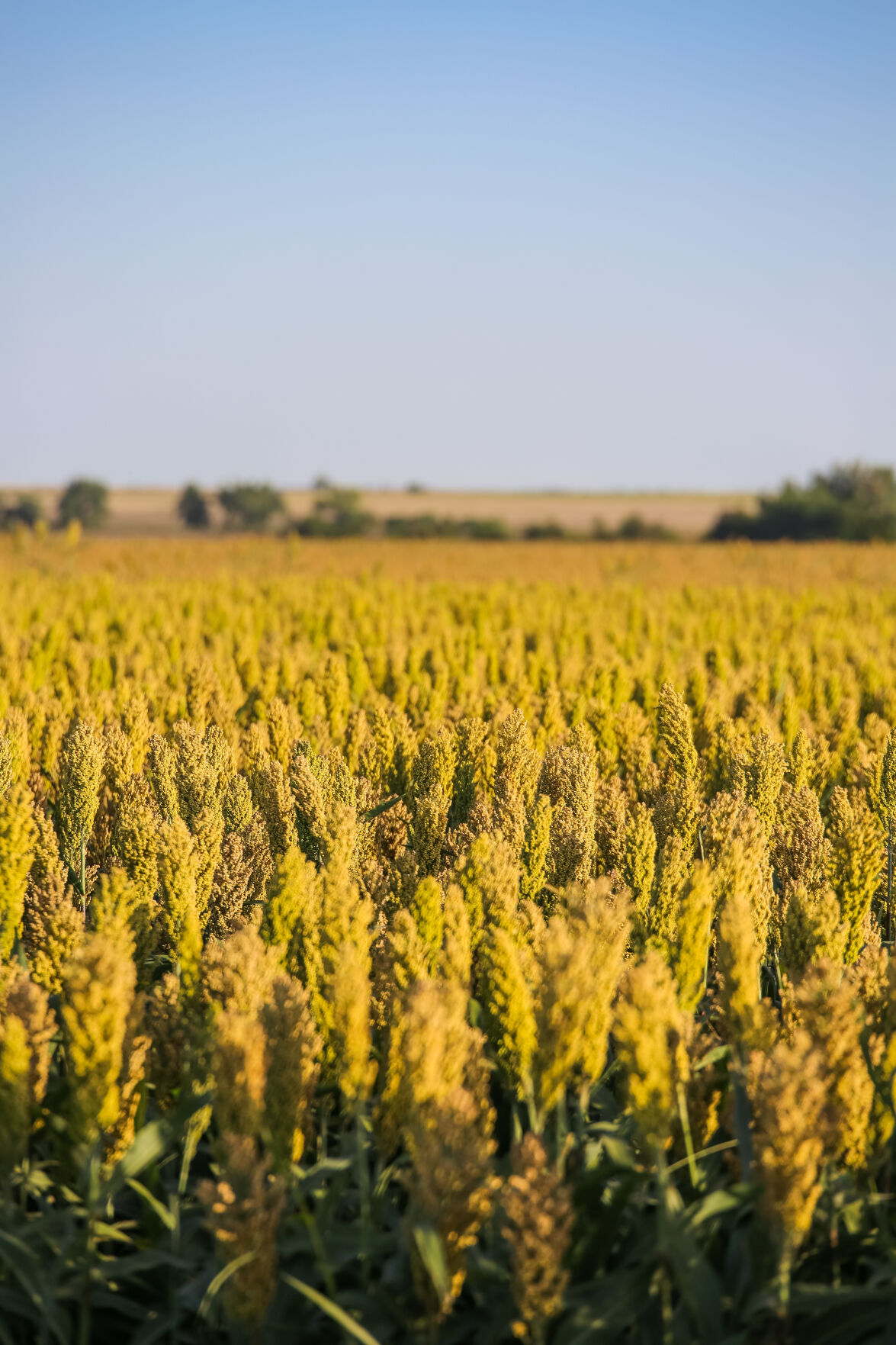Sarah Lancaster, Kansas State University Research and Extension weed specialist, told producers at the virtual Cover Your Acres Winter Conference that there’s more to weed control in grain sorghum than just throwing herbicides out in the field and expecting a miracle.
Lancaster said producers need to manage their fields to slow the development of herbicide-resistant weeds. Even with properly mixing and using herbicides as labeled, as well as utilizing good crop rotations, to get maximum efficacy out of herbicides and for those herbicides to succeed they have several considerations.
“We can’t be throwing them out there and expecting them to pull off miracles when we’re not doing our part,” she said. “I don’t want to sound like I’m coming down on anybody because I know that weather and timing and other obligations—just a reminder there that we’ve got to do what we can to maximize the efficacy of these products.”
There are several new developments in sorghum weed control, Lancaster said, and herbicide-resistant grain sorghum has been in the works for quite a while.
“We’re starting to see those technologies gain some traction,” she said.
K-State has been researching and testing grass control methods in grain sorghum systems, and stewardship of the technologies is something that’s very important. Some producers have been limited growing sorghum because of problems with weed management.
“We do have fewer herbicide options in grain sorghum relative to some of the other cropping systems,” Lancaster said. “For that reason I just wanted to touch a minute on the importance of integrated weed management and grain sorghum.”
Integrated weed management is especially important for grain sorghum, particularly when using cultural practices like crop rotation. Lancaster said it’s easier to start out with a clean field in order to keep it clean.
“Maybe for some of you that means tillage. Maybe for some of you that means a pre-plant or a burned down herbicide,” she said.
There are a lot of factors that might influence herbicide choice for grain sorghum, and depending on what is chosen, there tends to be a caveat.
“There’s going to be resistance issues, and you know at some point when we may even start to see some resistance to these (triazine) groups,” Lancaster said.
Often overlooked when thinking about post application is the timing.
“A lot of these post products for grain sorghum have some pretty tight limitations on application timings,” Lancaster said. “That makes scouting super important.”
For example, a popular combination of a post application is 2, 4-D and atrazine in combination. Lancaster said this must be administered when the plants are less than 12 inches tall and in those situations where the soil pH is high or it’s in sandy soils, make sure the sorghum has some growth on it prior to application.
Herbicide resistant grain sorghums
Lancaster said there are three different technologies that she’s been looking at during the past few years.
“The one that we’ve kind of been hearing about the longest is Inzen,” she said. “Zest has had a herbicide label for a couple of years now, and it’s developed by Corteva.”
Inzen, a herbicide-tolerant sorghum trait that offers post-emergence grass control in Pioneer brand sorghum. Zest is a specific formulation of nicosulfuron, which has been used in corn production systems.
Sign up for HPJ Insights
Our weekly newsletter delivers the latest news straight to your inbox including breaking news, our exclusive columns and much more.
Lancaster expects some varieties, including Inzen varities, to be available in 2021. “That’ll be good to get those out in growers’ fields and start to get some experience with them,” she said.
One technology, igrowth, probably has generated the most buzz in 2020 and as far as looking at Palmer amaranth control, this might be the system to look at.
“This system is a collaboration between Advanta, which develops the seed, and a company called UPL, which developed the herbicide,” she said. “The herbicide that’s labeled for use in igrowth sorghum is called IMIFLEX. And it’s a special formulation of imazamox.”
Imazomox has been used in soybean and alfalfa production as well. Producers need to be aware of the stewardship practices that need to be followed when using this product.
“You can only use either pre or post,” Lancaster said. “It has a label for both timings, but we’re limited to one application per season. So that’s going to be important to remember as you consider this system.”
According to Lancaster, this system is going to launch in 2021.
“They were waiting for the IMIFLEX label approval from the EPA and they got that actually between Christmas and New Year’s,” she said. “So that was a little Christmas present for the folks at UPL and Advanta.”
The third technology is one that’s the farthest out—Double Team.
“It’s being developed in collaboration with S&W or Sorghum Partners, and the chemical company is ADAMA,” she said.
Double Team will provide new herbicide tolerance traits developed using an advanced research and technology platform, and also provide high-performance seed. ADAMA will provide best-in-class herbicides to deliver effective weed control. The scope of the agreement includes ACCase-tolerance traits and ACCase-inhibitor herbicides.
“They have a very specific site of action within the plant that stops the production of certain amino acids,” Lancaster said. “But what’s really neat about this mode of action is that it’s kind of the poster child for herbicide resistance development, specifically when we talk about what we call target site resistance development.”
Lancaster said the latest word she’s gotten on Double Team’s release is advance field testing will begin in 2021.
“They are still waiting on a registration for that herbicide label,” she said. “I haven’t heard a peep about a name for that product that you might want to look for in the future.”
Export approvals for the seed are still needed, and a target date for a product launch for commercialization is sometime between 2022 and 2024.
“So this one is a little bit down the road yet,” she said.
Lancaster said herbicide resistant grain sorghums are great tools to have in the arsenal.
“We’re super excited to have these tools and to have these advances in the grain sorghum production systems,” she said. “They’re not silver bullets. In general, silver bullets are not going to come along again for weed management. I just want to emphasize again that these herbicide resistance sorghums are going to require some very careful product stewardship going forward.”
Kylene Scott can be reached at 620-227-1804 or [email protected].



